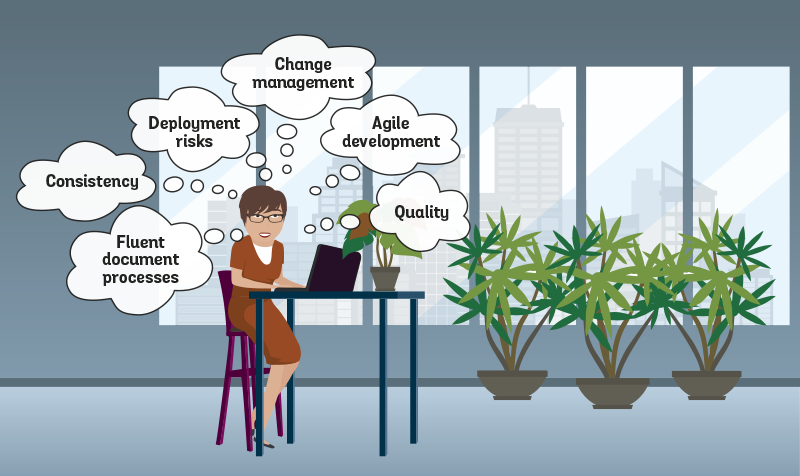Documents produced in any business or in public sector organization are basically created by merging some subject-specific data to pre-designed document templates. Within these domains, document production is an iterative, continuous process involving template design, implementing the generation of document in all appropriate information systems, validating quality of output documents and finally deploying to production at the desired time.
Here’s a brief introduction of six practical challenges in a document production process.
Quality
Quality of produced documents is a self-evident requirement, involving both content and design.
First, content must be accurate and up to date. For subject-specific data, it’s up to the processes of fetching relevant data like customer data, product or service configuration details, pricing information or organization contact information. For fixed template content, it’s about controlled workflow to have the right templates updated and deployed at the right time.
Brand details and formatting layout must conform the organization design guidelines. This is mostly a challenge for consistency (see next topic), but is also a quality challenge, as individual systems may pose restrictions in document formatting features available – adoption of fonts, vector graphics, pagination logic etc.
Consistency
Consistency in documents involves languages, templates and applications.
Documents produced should be equal in content and design regardless of language. Content consistency is achieved by routinely checking every language version, when template is changed, and by handling them logically as a single multi-lingual template during deployment. Solving design consistency here depends on solution-specific factors. It’s generally eased by tools supporting hierarchy in templates and in design declarations.
Consistency between documents is achieved by using templates as their base. If the number of templates needed is in tens or hundreds or even more, or the documents created are complex in structure, the typical flat templates don’t scale too well. Document design guidelines of an organization may have multiple levels of design in it and the templates should optimally implement a corresponding hierarchy.
Ensuring consistency between documents created in various applications is especially challenging in typical cases, where documents are created in each of the applications. They may use different technologies to generate documents, and even the templates may be of different types. If the same document title is to be produced by two distinct applications using different template formats, all template changes must be implemented in both systems. The deployments must also be issued in sync.
Change management
Document content changes is an ongoing process in any organization. As your organization adds new features to your services or or laws get changed, you need to make corresponding changes to your proposal and contract templates, pricelists and terms of service appendices. If there’s tens or hundreds of templates in use, managing these changes requires lots of resources and affects many parties.
Some questions to consider about change management:
- Which templates are affected by a change request? Who are the people in your organization who know these best? Is there documentation about this?
- After you’ve identified the templates affected, what about information systems and applications – which of them are affected by the change? What is the set of templates currently in use in various applications?
- Which parties are involved in change & deployment process?
Here’s some typical roles we’ve identified- Content experts: Product manager, brand manager, lawyer
- Developers: Product owner, project manager, developers
- Release: Release manager, service provider, quality assurance responsible
- Managing: Business manager (responsible for document production)
Content change management typically affects quite many roles in an organization. By organizing their work properly, the changes can be handled efficiently, with minimal risks and without excessive costs.
Agile development
Initial designing of the templates and changes to them over time is often a time-consuming due to the many business and legislation requirements for the content and several parties involved. Achieving agility – combination of speed, control and coordination – in this process is a challenge by nature.
Optimally, the solution for template management supports collaboration and offers familiar tools to help everyone involved to participate in the design and edit of the template. In the test phase that follows, the quality assurance personnel should have means to validate template output in all needed test cases.
Deployment risks
Even if template changes have been designed and implemented with care and tested according to approved test cases, deploying templates always carry some risks.
Missing templates in deployment sets or delivering inconsistent versions are risks minimized by planning a deployment process and following it routinely. This should be supported by your template management system and is automated in the best case. In case of multiple applications where deployment is to be done, some coordination and manual actions may be needed.
If templates and application updates are deployed together, there may be at least twofold dependencies between them. First, failing in application updates may also prevent new template versions to be deployed. Secondly, software updates are often a heavier process possibly requiring a service break in large systems. Those are laborious and costly and as such executed more infrequently. This has an effect in template deployment schedules.
Preparing a rollback strategy is good practice for template deployments just like it’s for software. This may be supported by the template management system. Another supported feature is a log of the changes. This is of help in tracing affected changes in templates.
Fluent document processes
The last challenge is about document processes and how document production solution can help with that.
Ultimately, documents are created including all the available data to automate its flow in various document processes. That flow control data, typically metadata, may relate to the template itself, or it may be specific to the document data or even user preferences. If the template format supports metadata and the template management system supports management of it, the document production solution can help in automating document processes.
|
Written by Jouni Vierumäki |

